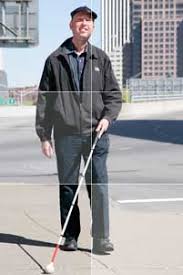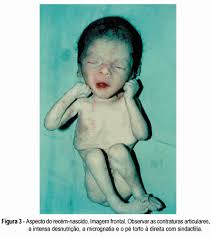
What is Kidney Disease with Dialysis?
Diseased kidneys are unable to maintain homeostatic balance of water, minerals, and excretion. Toxic end-products accumulate in the blood
and tissue. The kidney also is no longer able to function as an endocrine organ.Dialysis is the process of separating elements in a solution by
diffusion across a semipermeable membrane. The purpose is to reestablish homeostatic balance and decrease the toxic end-products.
Cause
Acute or chronic kidney failure may occur as a result of numerous disorders, including uremic encephalopathy, pericarditis, intractable
metabolic acidosis, congestive heart failure, and hyperkalemia. Persons affected may be of any age. Both sexes are affected equally.
Assessment
Areas
- developmental profile
- muscle strength
- range of motion
- endurance
- fine motor skills, manipulations, dexterity, and bilateral coordination
- sensory registration
- sensory processing
- attention span
- learning skills
- self-concept
- sense of self-mastery or self-control
- mood or affect, especially signs of depression
- social skills
- coping skills
- daily living skills
- productive history, values skills, and interests, including academic and play skills
- leisure skills and interest
Instruments
No specific instruments developed by occupational therapists were identified in the literature. The following types of tests may be useful:
- academic testing
- manual muscle test by groups of muscle
- goniometry
- activities of daily living
- play history
- leisure checklist
Problems
Motor
- The person may have decreased muscle strength.
- The person may have decreased physical endurance and rapid fatigue.
- The may have loss of range of motion.
- The person may have decreased muscle control.
- The person may have decreased fine motor coordination and dexterity.
- The person may have foot drop, trmor, or other signs of peripheral neuropathy.
Sensory- Loss of sensation may occur.
- Loss of vision or decreased visual acuity may occur.
Cognitive
- The person may have loss of attention span and concentration.
- The person may experience drowsiness.
Intrapersonal
- The person usually experiences a decrease or loss of self-concept, especially mastery and autonomy.
- The person may have lost self-esteem or feelings of self-worth.
- The person may express anger and frustration.
- The person may experience loss of effective coping skills.
- The person may have an increased sense of dependency.
- The person may be depressed.
- The person may express fear of death.
- The person may become irritable and uncooperative.
- The person may become confused and anxious.
- A preschool child may perceive painful medical procedures, hospitalization, and separation from parents as punishment.
- A school-age child may perceive him or herself as different from others.
- The parent or parents may have many of the same problems that the child experiences.
Interpersonal- The person may experience difficulty relating to authority figures.
- the person may withdraw from social group interaction.
- The person may experience conflict with his or her family related to changing roles.
Self-CareThe person may be unable to perform some activities of daily living due to limited energy or decreased range of motion.
Productivity
The person may be unable to perform productive activities, such as academic work, play, and chores, due to reduced energy level or decreased strength.
Leisure
The person may not engage in favorite leisure activities because of decreased functional abilities.
Treatment/Management
Motor
- Increase muscle strength through graded activities.
- Increase functional range of motion through selected activities within the person's normal activities if possible.
- Increase the person's muscle control.
- Increase coordination and dexterity through selected activities.
- Increase physical endurance through gentle exercises.
SensoryNo specific sensory treatment or management is recommended.
Cognitive
- Instruct the person in concepts of energy conservation and work simplification.
- Instruct the person in concepts of safety associated with dialysis.
- Assist in instructing the person on recommended diet changes and necessary modifications in food preparation.
- Instruct the person in development of a time-management schedule that includes cycles of rest and exercise.
- Select projects that are quick and require a short attention span, such as games, puzzles, mazes, or crosswords for children.
Intrapersonal- Increase self-concept through successful accomplishment of art, craft, educational, creative writing, or game activities.
- Increase the person's sense of mastery through knowledge about and performance of activities.
- Encourage the person and family members to verbalize feelings of hopelessness, helplessness, and fear of dying.
Interpersonal- Encourage the person to engage in social activities.
- Assist the person and family to reorganize roles within the family unit, if necessary.
- Encourage the person and family to articipate in a self-help group, if available, in their hospital or community.
- Encourage the person to maintain contact with the outside world if hospitalization is required. Field trips may be useful.
Self-Care- Maintain or increase independence in self-care activities through the use of work-simplification or time management techniques.
- Provide adapted equipment to assist the person in the performance of self-care activities when indicated.
- Cooking may be useful to increase appetite and reinforce concepts of good nutrition.Check dietary restrictions, such as avoiding salt and chocolate.
- Young children may need to develop skills in dressing and grooming.
Productivity
- Assist the person to modify his or her home and work environment if needed.
- Assist the person to explore alternate interests if current vocation cannot be continued.
- Assist the person to perform other productive roles, including home manager, volunteer, or student, as indicated.
- Encourage the person to continue studies, if student.
- Increase development of play skills. Role playing as a doctor or nurse may relieve a child's fears and anxieties and provide outlet for feelings.
Leisure- Assist the person to modify existing leisure interests to conform to physical capacities.
- Assist the person to explore new interests that can be performed within physical capacities.
PrecautionsAvoid messy or dirty activities since persons with renal disorders may be in poor general health or have a poor immune system.
Prognosis and Outcome
- The person has maintained or increased muscle strength.
- The person has maintained or increased range of motion.
- The person has maintained or increased fine motor dexterity and bilateral coordination.
- The person has maintained or increased physical endurance.
- The person has maintained or increased balance and postural control .
- The person demonstrates use of energy-conservation and work-simplification techniques.
- The person demonstrates Knowledge of safety factors associated with dialysis.
- The person is able to express feelings about dying.
- The person demonstrates a positive self-concept and internal locus of control.
- The person demonstrates stress-management and coping skills.
- The person maintains or increase social interaction skills.
- The person demonstrates productive skills.
- The person demonstrates leisure skills.







